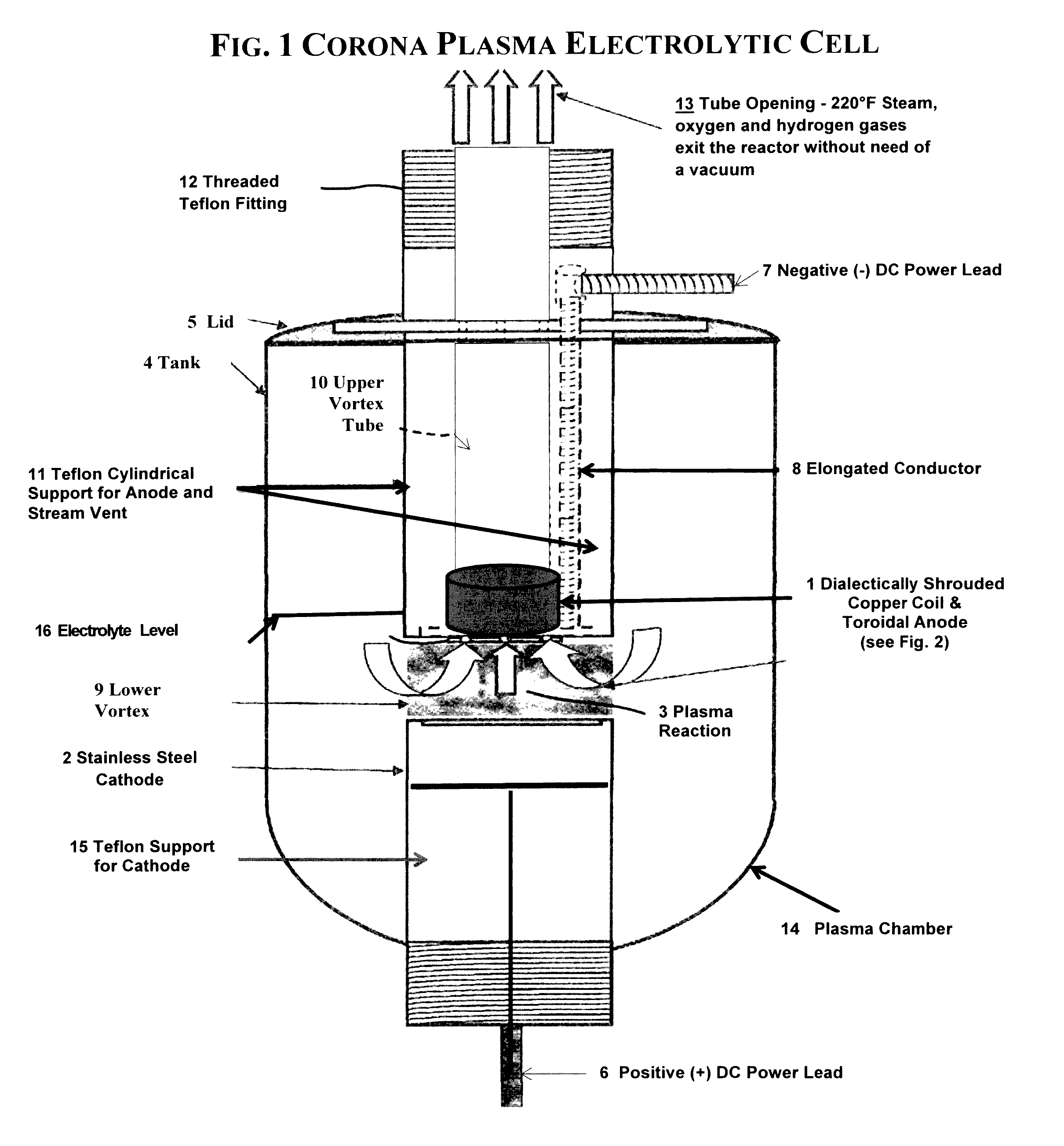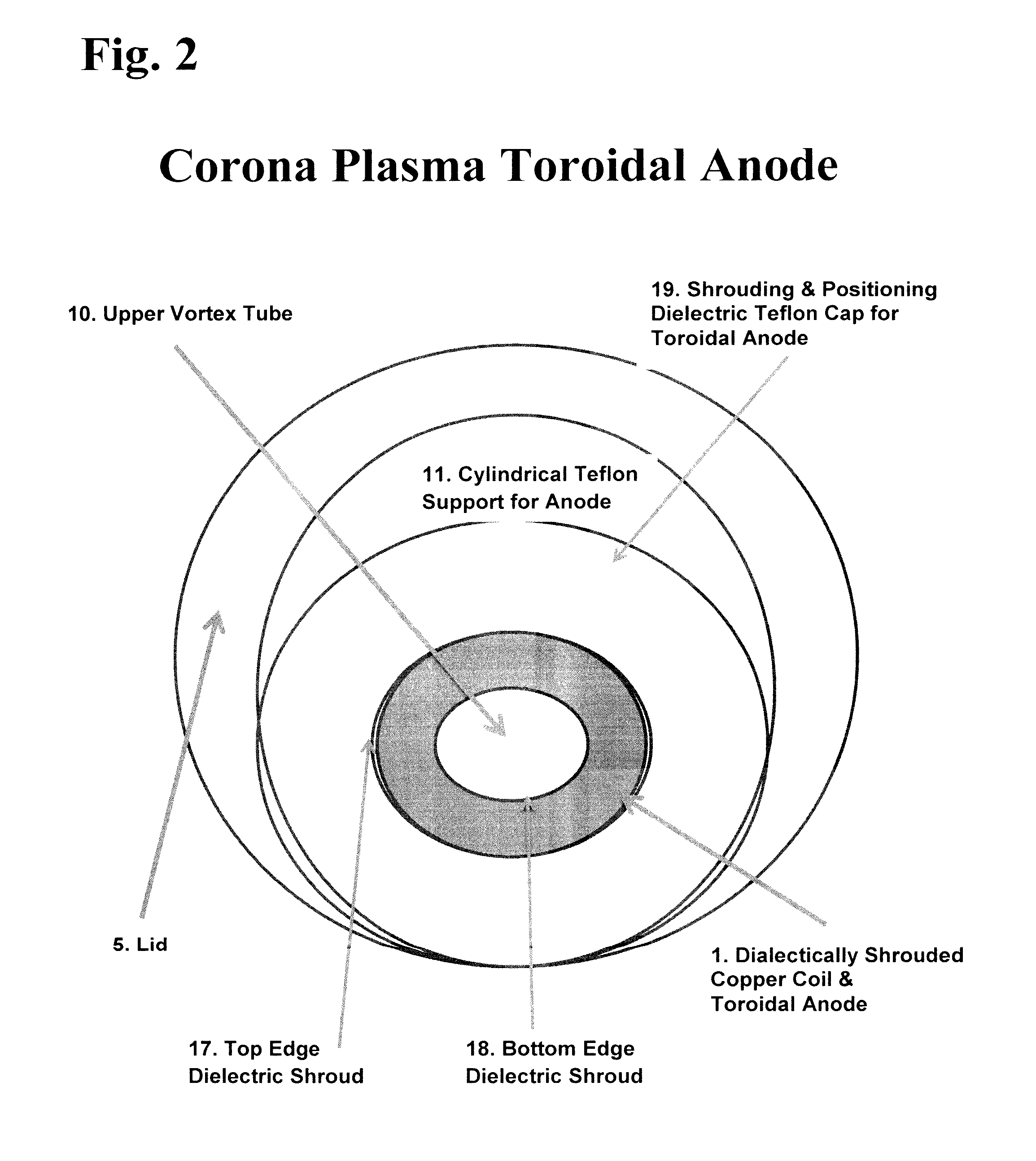Electrolytic cell for heating electrolyte by a glow plasma field in the electrolyte
a technology of electrolyte and glow plasma, which is applied in the field of electrolyte heating cells, can solve the problems of reducing the ability of the plasma field to efficiently heat deeper electrolyte, deteriorating or eroding the electrode, and the inability to maintain the plasma field for an extended period
- Summary
- Abstract
- Description
- Claims
- Application Information
AI Technical Summary
Benefits of technology
Problems solved by technology
Method used
Image
Examples
Embodiment Construction
[0011]The present invention utilizes a Toroidal Anode 1 as the key element of a plasma confinement system including means for generating a Spheromark (easily formed, self-organized magnetized plasma configurations in the shape of a Torus), within a containment vessel identified as the Plasma Chamber 13 (or Tank 4 which is constructed of dielectric plastic), which comprises a plasma source with an anode 1 and a cathode 2 within the Plasma Chamber 13 and spaced apart 50 mm in a direction generally perpendicular to the magnetic lines of force of the plasma confinement system when an electric charge is applied between the Cathode 2 and Anode 1 The anode and cathode of the plasma source are arranged concentrically within the toroidal vessel with their axis coincident with the minor axis of the toroid. The anode 1 and cathode 2 each have a diameter of 76 mm, with the anode having a 10 mm Teflon shroud concealing the edge of the copper coil top 16 and bottom 17. Both electrodes are support...
PUM
| Property | Measurement | Unit |
|---|---|---|
| diameter | aaaaa | aaaaa |
| diameter | aaaaa | aaaaa |
| diameter | aaaaa | aaaaa |
Abstract
Description
Claims
Application Information
 Login to View More
Login to View More - R&D
- Intellectual Property
- Life Sciences
- Materials
- Tech Scout
- Unparalleled Data Quality
- Higher Quality Content
- 60% Fewer Hallucinations
Browse by: Latest US Patents, China's latest patents, Technical Efficacy Thesaurus, Application Domain, Technology Topic, Popular Technical Reports.
© 2025 PatSnap. All rights reserved.Legal|Privacy policy|Modern Slavery Act Transparency Statement|Sitemap|About US| Contact US: help@patsnap.com



